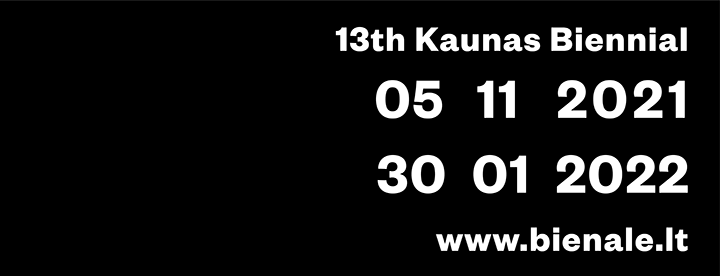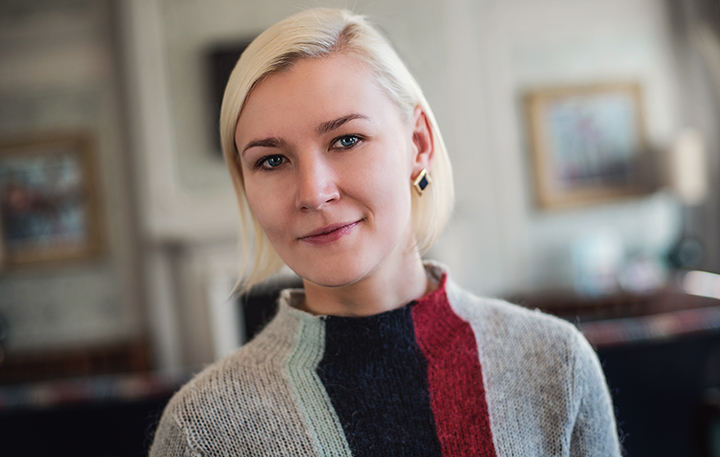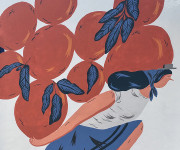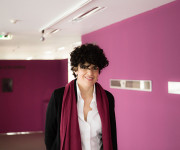MagiC Carpets is a four-year (2017–2020) platform project made possible by Creative Europe and headed by Kaunas Biennial (Lithuania). It is a network of fifteen international organisations in fifteen European countries. Designed to promote cultural exchange, artist mobility, the inclusion of local communities and international cooperation, in the face of the global pandemic, the project is looking for new and creative ways to achieve its goals.
This conversation with Neringa Stoškutė, project manager at Kaunas Biennial and MagiC Carpets, will shed some light on the challenges faced by the cultural operators in the European Union member and candidate states, the cultural organisations, artists and curators, also touching upon the current trends of contemporary art.
MagiC Carpets platform helps the emerging artists implement their projects in foreign countries. Can you tell us how many successful projects have already taken place within the last couple of years, and how many artists, young curators and local communities were involved into the activities of MagiC Carpets?
Neringa Stoškutė: Within two years of the project and together with its partners, we have achieved really impressive results: we have completed the total of 38 artist residencies with 49 invited foreign and around 170 local artists, activists and experts as well as 40 different local communities. Since the beginning of MagiC Carpets, it has worked with 15 emerging curators and with geography and activities of the project expanding, seven more young talents have joined them. We are so grateful that this project has provided a possibility for young talents, curators and artists alike, to work together and establish close ties with those who create networking opportunities for the future. We strive to create and cultivate the international network of young creators who understand art as a socially responsible tool that promotes accessibility of culture and activism.
How many projects were there estimated for this year and this particular period of time? How many residencies and trips that have been planned could not take place?
S.: For this year, there have been 16 different art residencies planned. For this time, the first visits of foreign artists were supposed to take place in partner countries. At the beginning of the year, when quarantine was announced, and European borders were closed, we still managed to enjoy several research visits that have taken place. For example, an artist from Italy spent a couple of days in Innsbruck (Austria) while visiting project partners openspace.innsbruck, an artist from Portugal visited our partners EVA International – Ireland’s Biennial in Limerick (Ireland) and a partner from Austria visited our partners Trempolino in Nantes (France). A new record was achieved by partners ZK/U Berlin (Germany) and ourselves: a residency that lasted only a few days was the shortest one ever recorded throughout the entire history of MagiC Carpets and that of ZK/U! An artist from Portugal arrived in Berlin and just a couple days later, she was looking for tickets back home, since the state of emergency was announced, and it became clear that the European borders will be closed.
Within the upcoming several months, in April and May, artist residencies were supposed to start. Foreign artists were supposed to fly to our partners, get to know the local artists and members of communities and start developing their creative projects. Of course, these journeys will not take place, but together with the partners of MagiC Carpets, we plan that during this period, project activities can move to the virtual space and a lot of creative projects will start online. Together with our partners, we are looking for ways to complete this year’s goals and we invite all artists and communities to get involved online. We also support, join and launch various online initiatives and creative activities.
You communicate with project partners in other European countries. What is the prevailing mood? Is the cultural sector abroad in a similar difficult and uncertain situation just like in Lithuania?
S.: In entire Europe the situation is similar. When the state of emergency and quarantine were announced in March and the movement of residents was limited, a lot of activities in the cultural sector was suspended, but no one has succumbed to panic and after several weeks, the mood is rather optimistic and positive. Everyone understands the gravity of the situation and in most of the European countries, everything is done to reduce the impact of the virus on the cultural sector and people working in it as much as possible. We all understand the gravity of the current situation and the challenges it poses to the cultural sector and its consumers. However, we are a creative lot, and I think that we will find various solutions for this situation – proper online tools and channels to reach the audience, offer the cultural content and activities accessible at home.
Do you know any examples of innovative ideas employed by curators and artists that help continue the activities and adapt to the current situation?
S.: I have spoken many times and encouraged partner organisations and curators participating in the project to maintain close ties. First of all, we need to make sure that all organisations participating in the project, as well as their curators and artists, would continue to develop their creative ideas for various projects. Before this state of emergency was announced, artists were supposed to go to partner countries and work with local artists by creating with them new works of art in public spaces. Since currently, we cannot do it, we ask our partners to look for various ways of remote cooperation and communication.
For example, partner organisation from Folkestone UK plans to start a postcard exchange programme with an artist from Ireland in order for her to familiarise herself with the local history and context as much as possible. Partner organisation Latitudo from Rome (Italy) strives to involve as many local artists as possible in order to voice a fairy-tale book for children that their project is based on and thus spread the information about the project and MagiC Carpets platform on social networks. The previously mentioned partner organisation openspace.innsbruck plans to move a part of its project related to a book about 55 imaginary cities into the virtual space. So I can say with confidence that MagiC Carpets continue to fly across Europe, only currently their route is virtual.
One of the goals of MagiC Carpets is to employ art to solve certain problems of local communities. Can you share several examples about an artist making an influence on a community or its members?
S.: One of the main aims of MagiC Carpets is not to solve problems of local communities, but rather help them approach those problems in a different (artistic) way, and, thus, maybe find them a different suitable solution. I think that success lies not in the results but the process itself, and so each residence is successful in its own way. The indicators to measure our success are qualitative rather than the quantitative ones. Sometimes it is difficult for an artist from abroad to establish a close connection with the community, so the greater impact can be experienced by the local artists because creators find the common language easier. But in most of the cases, I can say that local communities welcome artists with open hearts. Even though they speak in different tongues, the language of art unites everyone and it can be understood by everyone.
During the 12th Kaunas Biennial, I was in charge of an excursion for the former employees of factories in Šančiai (a suburb of Kaunas). It was a community that worked with Serbian artist from MagiC Carpets, Sonja Jo. When we approached Sonja’s work in the exhibition (the one that was based on the stories of the community about the changes in the 90s, when Lithuania gained the independence from the Soviet Union), they immediately told me that they understand it all and I don’t have to explain anything: “It’s our history! Lithuania emerges from the ruins of the Soviet Union into the new tomorrow!” At that moment, I understood that the greatest impact of this project is not on us, cultural operators, curators, artists, and organisations of art and culture, but rather local communities which get to see what art can do in a completely new light, what stories can it tell and, most importantly, that these stories are their stories.
The contemporary world of art is based on mobility: artists and their projects are not subjected to the borders of countries, they travel and work in different countries, and their works are introduced globally. Observing the current situation, how do you think the international art sphere will change in the face of this crisis?
S.: I think that in the current situation we all understand that the most important thing is not travelling and journeys per se, but rather this close connection between people. I think it is naive to think that we are getting back to the same place where we have been before this all happened. It is likely that a lot of things will change in the future, including the models and consumption habits of culture and art. It is very hard to predict the future, but I think that we will focus more on our immediate environment, pay more attention to solving local problems of art and culture, start working more locally, focus more on the local audiences, and maybe it will result in more consciousness when we are going to think about international projects and partners. I think this period was lucrative for the appearance of culture and art online. Organisations of art and culture are looking for new ways how to introduce their content online. I think that this trend will remain relevant in the near future.
Would you agree with the claim that during the quarantine, we have seen how much the culture means in the wider sense: books, films and music help people survive this hard period. How have your own habits of cultural consumption changed?
S.: I will have to admit that this period is very difficult for me. Sitting at home without going out is quite a challenge! I am very communicative and rather an extrovert, so communication with different people gives me energy and ideas. During this period, I miss visiting museums, theatre and cinema, and mostly, direct communication with colleagues, partners and creators. However, various remote and virtual measures help. Even though the operations in MagiC Carpets and other projects of Kaunas Biennial do not stop, I dedicate most of my free time for books.
I agree that the importance of culture is immensely important. Culture gives the basis for our life. I think that culture is not only books, films and music, but also what it nurtures in us: creativity, spirituality and openness. We “consume” culture not because it helps survive this difficult period, but because it fills us up with new knowledge, shows different ways to see the world, inspires to improve ourselves and move forward.
MagiC Carpets project is supported by Creative Europe 2014–2020 and Lithuanian Council for Culture.









